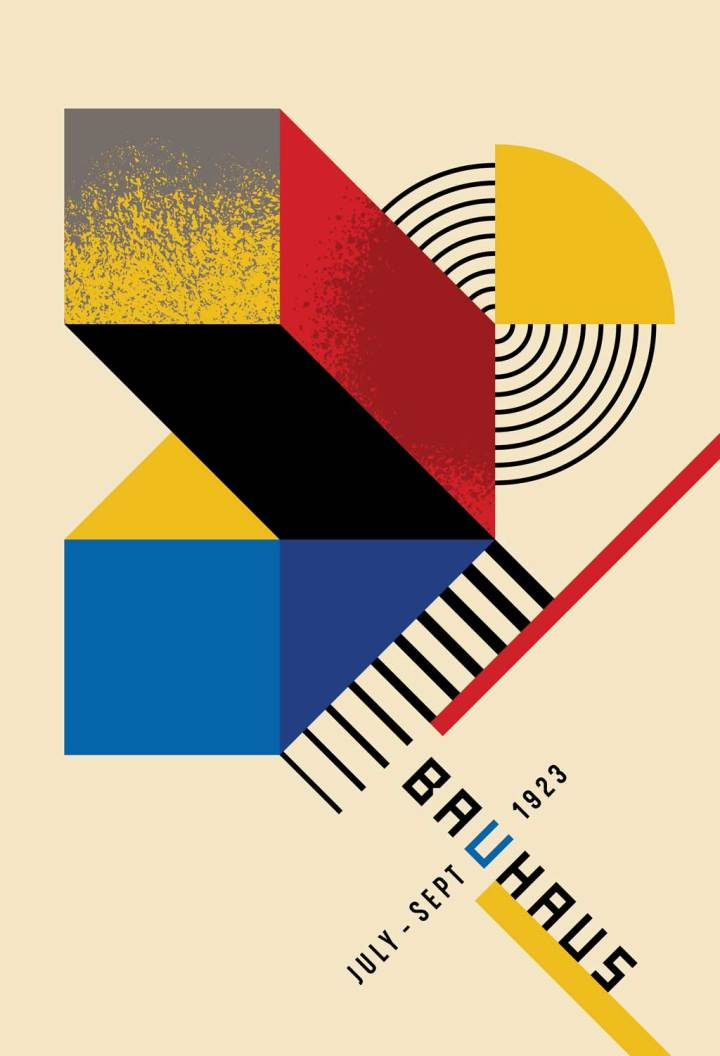Bauhaus Resurgence: Unveiling the Timeless Avant-Garde Influence in Modern Graphic Design
In the ever-evolving landscape of graphic design, certain movements stand as timeless pillars, shaping the very essence of the craft. One such avant-garde movement that has left an indelible mark is the Bauhaus school, a beacon of design innovation that emerged in the early 20th century. Join me on a journey as we unravel the profound impact of Bauhaus design principles on contemporary graphic design, exploring how this avant-garde movement continues to inspire and shape the visual language of our modern era.
A Glimpse Back in Time: Bauhaus Roots
The Bauhaus movement, founded in 1919 in Weimar, Germany, was a revolutionary force that sought to break down the barriers between art, craft, and technology. Led by visionaries like Walter Gropius, Wassily Kandinsky, and Paul Klee, Bauhaus embraced a holistic approach to design, emphasizing simplicity, functionality, and a marriage of form and function. This movement laid the groundwork for what we now know as modern graphic design.
As we delve into the present, it becomes evident that the Bauhaus legacy endures. The emphasis on minimalism, clean lines, and the reduction of design elements to their essential forms is a testament to the enduring influence of Bauhaus principles. Contemporary designers, consciously or not, channel the spirit of Gropius and his cohorts as they seek a harmonious balance between aesthetics and functionality.
Form Follows Function: The Bauhaus Mantra Revisited
The mantra "form follows function," a cornerstone of Bauhaus philosophy, remains a guiding principle in modern graphic design. Whether creating logos, websites, or print materials, designers today recognize the importance of purpose-driven design. Each element serves a function, contributing to a cohesive and impactful visual message.
Color, Composition, and Contrasts: Bauhaus Aesthetics in the Digital Age
The Bauhaus commitment to experimentation with color, composition, and contrasts finds resonance in the digital age. The bold use of color blocks, the careful consideration of negative space, and the strategic juxtaposition of elements—all hallmarks of Bauhaus aesthetics—have seamlessly transitioned into contemporary design practices, especially in the realm of digital and web design.
Education and Collaboration: Bauhaus Ideals in Design Studios Today
In conclusion, the Bauhaus movement, with its avant-garde spirit, remains an eternal wellspring of inspiration for graphic designers. As we rediscover the principles that defined this groundbreaking era, we find ourselves not merely paying homage but actively participating in a design continuum. The Bauhaus spirit lives on in every minimalist logo, in every carefully curated webpage, and in the seamless fusion of art and technology that defines contemporary graphic design.
As a designer navigating the complexities of the 21st century, I find solace and inspiration in the Bauhaus legacy. It's a testament to the enduring power of ideas and the transformative impact of design movements that transcend time. The avant-garde lives on, as vibrant and relevant as ever, in the very fabric of our visual culture.
Rohan Mathew










Comments
Post a Comment